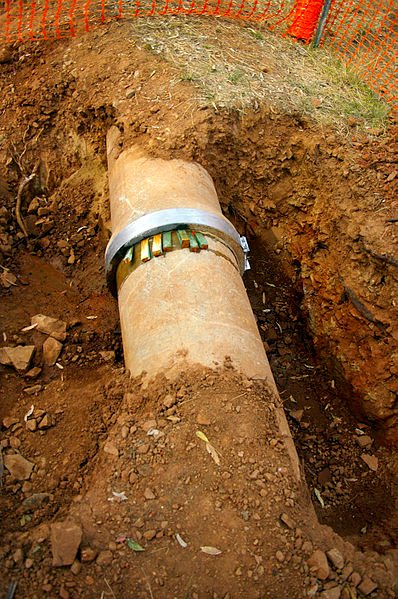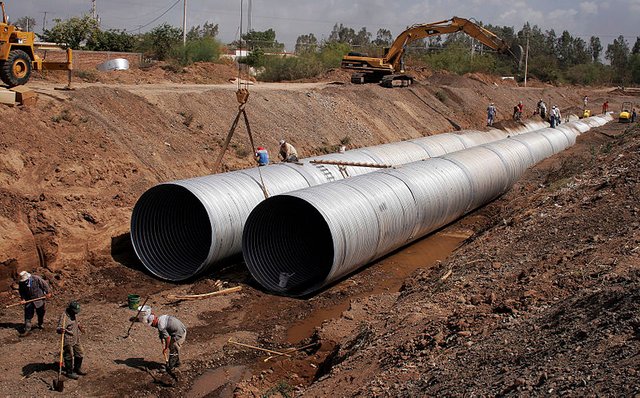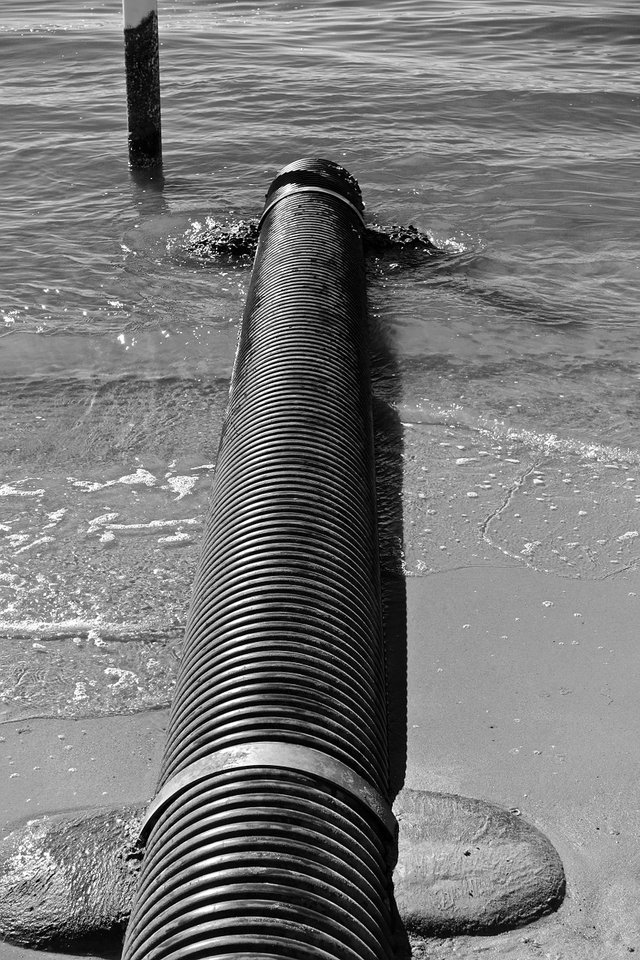Rehabilitation of Sewer Pipelines
.jpeg)
CH054A - HOBAS Inner Pipe for Storm Sewer flickr
One of the most difficult aspect of engineering is rehabilitation, this is because it takes extra carefulness to retain the drawings and specifications used during installation processes as to avoid defects which may lead to breakdown of the system.
Some years back in school, we were assigned by our Head of Department (HOD) to go for a field trip in a rural village where both installation and rehabilitation of sewer pipes were ongoing. The construction company's job was to construct a new sewer pipeline lane and then repair others that are bad.
While we were carrying out the field trip, we asked varieties of questions, and one of the questions asked was about the rehabilitation aspect. Because we found out that the engineers in the rehabilitation area were taking a lot of time to get a pipeline rehabilitated whereas the engineers at the installation area do not spend much time to lay a pipe down.
The supervisor said to us, "that the engineers at the rehabilitation area are taking their time to amend the pipelines so as to avoid errors". Which I completely agree with him. Because it takes time to shape or fix an object that is bad to its original form.
I know you may be pondering on the meaning of a sewer pipeline.
Sewer pipelines are sub pipeline structures basically used to remove waste and provide drainage.
What about rehabilitation?
Rehabilitation in this context is the restoration of the mains condition to a desired standard and can be split into structural and non-structural techniques.
The structural rehabilitation has to do with what is called sliplining, sewage lining, die drawn insertion, conventional trenching, narrow trenching, U-liner and pipeline insertion molding. It is aimed at establishing a standard that meets the same requirements as those for new sewerage system.
While the non-structural rehabilitation involve the use of cement lining, air scouring, swabbing, flushing and insertion of a flexible liner.
In a simple term rehabilitation could mean to repair , renovate and renew.
So I will be explaining the three terms that are associated to rehabilitation. Firstly is repair. So let's see what it means to repair a pipeline.
Repair
.jpeg)
Centreville, VA 2015 Pipeline Accident, source :Flickr
Repair encompasses methods for re-establishing the standard condition in the case of locally limited defects. Repair includes local replacement of pipe by excavation, local renovation without excavation, local repointing of brickwork, internal/external injection and local sealing.
Recently, robots and manipulators have been developed in Switzerland for reaching inaccessible sewers greater than 200mm diameter. This is used for sealing locally limited defects such as cracks and leaking pipe joints by grouting or injecting and clearing protruding drainage obstacles. Also, robots have been designed in Germany for performing mechanical and automated clearance and grouting of defective joints in accessible brick-lined sewers.
Let's take a look at renovation as it regards to pipeline.
Renovations

concrete water pipe ,source :wikimedia commons
Renovation includes measures for restoration of standard condition of defective sewers through coating and lining. The coating may be pressure, displacement or spray-on processes while lining may be by insertion of pipes or segmental linings. A new development in relining of pipes circumvents pulling-in excavation; rather the pipeline are introduced through the manhole into the section to be renovated.
And finally let's see what pipeline renewal is all about.
Renewal

114 inch pipe installation, source: wikimedia commons
Renewal is the building of a completely new sewers when it is no longer useful to repair or renovate the old one. This can be done by the open cut method or the trenchless method. The open cut method where the ground (including road surfaces) has to be opened up and covered again is subject to several disadvantages especially when the sewers are deeply buried. Several methods are available for replacement of pipes without excavating a trench. One of the methods is called pipe bursting method, and is characterized by pulling or pushing a bursting body through the sewer section to be renewed. The old pipe wall is simultaneously destroyed and the new conduit is installed immediately behind the bursting body. In a recent method, the old sewer is re-bored, destroyed and conveyed by means of an unmanned, remote control tube advancing system, and at the same time the new sewer is built.
Have you thought of where these waste water goes to through the sewer pipes?

Sewer pipe drain, source: pixabay
The picture above tells that the waste water (or flood) from our cities, villages are channeled to the river or ocean through the sewer pipes.
Conclusion
Before the rehabilitation of a sewer channel, it is needful to perform diagnosis. The reason is because a lot of sewer systems are inspected closely by humans or CCTV (closed circuit television). This is to enable the engineers to know the exact spot that needs to be rehabilitated.
This article is more like a summary of the basics of sewer pipeline rehabilitation. I'm currently working on the processes involved in the construction of a sewer system both the computer systems that controls it.
References
[1] Sanitary sewer system rehabilitation techniques vary
[2 ] Typical Sewer Rehabilitation Methods
[3 ] Choosing The Right Rehabilitation Method
[4 ] 7 Types of Trenchless Rehabilitation Methods and How They Are Used
[5] Pipe Repair Systems Choosing The Rugh Rehabilitation Method
For those writing STEM (Science, Technology, Engineering, and Mathematics) related posts, consider to be part of #steemSTEM community. The link to #steemSTEM community discord room is here. For STEM writers from Nigeria, include #stemng tag in your posts in addition to using normal #steemstem tag. You can check this blog by @stemng for more information. You can visit this post by @steemstem on how to become a member of STEM community. Visit this link for helpful guidelines on writing #steemstem targeted posts. In order not to violate copyright laws in your use of images, consider checking out this post by @steemstem team.

Congratulations! This post has been upvoted from the communal account, @minnowsupport, by masterwriter from the Minnow Support Project. It's a witness project run by aggroed, ausbitbank, teamsteem, theprophet0, someguy123, neoxian, followbtcnews, and netuoso. The goal is to help Steemit grow by supporting Minnows. Please find us at the Peace, Abundance, and Liberty Network (PALnet) Discord Channel. It's a completely public and open space to all members of the Steemit community who voluntarily choose to be there.
If you would like to delegate to the Minnow Support Project you can do so by clicking on the following links: 50SP, 100SP, 250SP, 500SP, 1000SP, 5000SP.
Be sure to leave at least 50SP undelegated on your account.
Very nicely articulated post @masterwriter... I enjoyed reading through it and also learnt on the way... Thanks for sharing...
Thanks for the feedback!